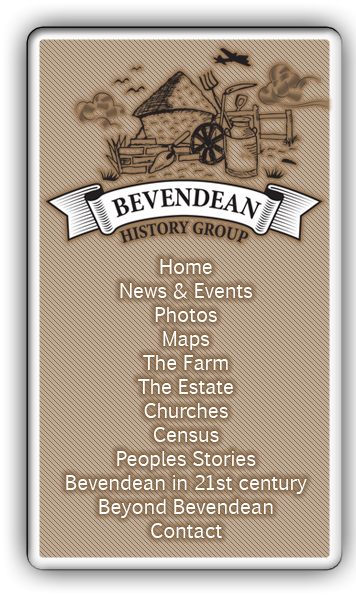
The Estate - Bevendean History Project

Bevendean Estate Council Houses
By
the beginning of the 1900’s, as a consequence of the rapidly
growing population, Brighton Corporation realised that they were going
to need land for house building in the future.
Land was sought around the boundaries of Brighton whenever it became available and in 1913 Lower Bevendean Farm, with an area of about 279 acres, was purchased from the estate of Steyning Beard. Mr F. J. Allcorn the sitting tenant had his tenancy renewed by Brighton Corporation.
In July 1918 Brighton Corporation agreed to purchase an area of 424 acres from the Moulsecoomb Estate, downland that was outside the Brighton boundary and therefore part of East Sussex. The purchase was not completed until after the end of the First World War and 900 houses were proposed for the new housing estate.
Moulsecoomb was Brighton’s first large scale housing estate and the initial development commenced in 1920 when work started on the roads and drainage of the area known as South Moulsecoomb.
Upper Bevendean Farm was purchased by Brighton Corporation in January 1940 and the whole Bevendean area was annexed by the County Borough from Falmer parish on 1st April 1928.
The first development of the Lower Bevendean estate came in the early 1930s, when the corporation extended its housing from South Moulsecoomb along the valley into Bevendean. More houses in The Avenue, plus Lower Bevendean Avenue, Upper Bevendean Avenue and Manton Road were built between 1930 and 1934.

House building started in 1947 with the first three semi-detached houses in Heath Hill Avenue.
With the pressing need for new homes in the post-war period, the greater part of the Bevendean housing estate was rapidly developed by the Corporation, which named the roads after English castles as shown by the plan below, published in February 1949.

Here are three photographs showing building work in process at 40-48 Norwich Drive, Bevendean. “From The Argus Archive held at The Keep”.



The three photographs above were taken on 7th May 1949.
Most of the roads were built by the end of 1949 and the houses followed over the next 4 years. The original idea was to have a Norwich Drive East and a Norwich Drive West but in February 1950 it was considered that the naming of these two roads with separate house numbers for each would cause confusion when all the houses in these roads were occupied, on account of the fact that the words East and West might be omitted from the address on mail.
It was decided that Norwich Drive West be renamed Norwich Drive and that Norwich Drive East be renamed Bodiam Avenue. The name of Bodiam Avenue would conform to the policy of castle names on this Estate. At the same time the Close at the north end of Norwich Drive East was called Bodiam Close.

A 1950s photo of type E houses on the Bevendean Estate.
By the end of December 1953 a total of 659 houses had been built and occupied on the Lower Bevendean estate. This total consisted of 30 one bedroom flats, 296 two bedroom houses, 329 three bedroom houses and 4 four bedroom houses.

Type R houses in Norwich Drive which have the bedrooms on the lower floor and the kitchens and living rooms on the upper floor at the level of the entrance doors.
By the end of 1953 Brighton Council had 8529 properties available for rent within the Borough.
Council Houses and House Plans for some of the houses types built at Bevendean.
